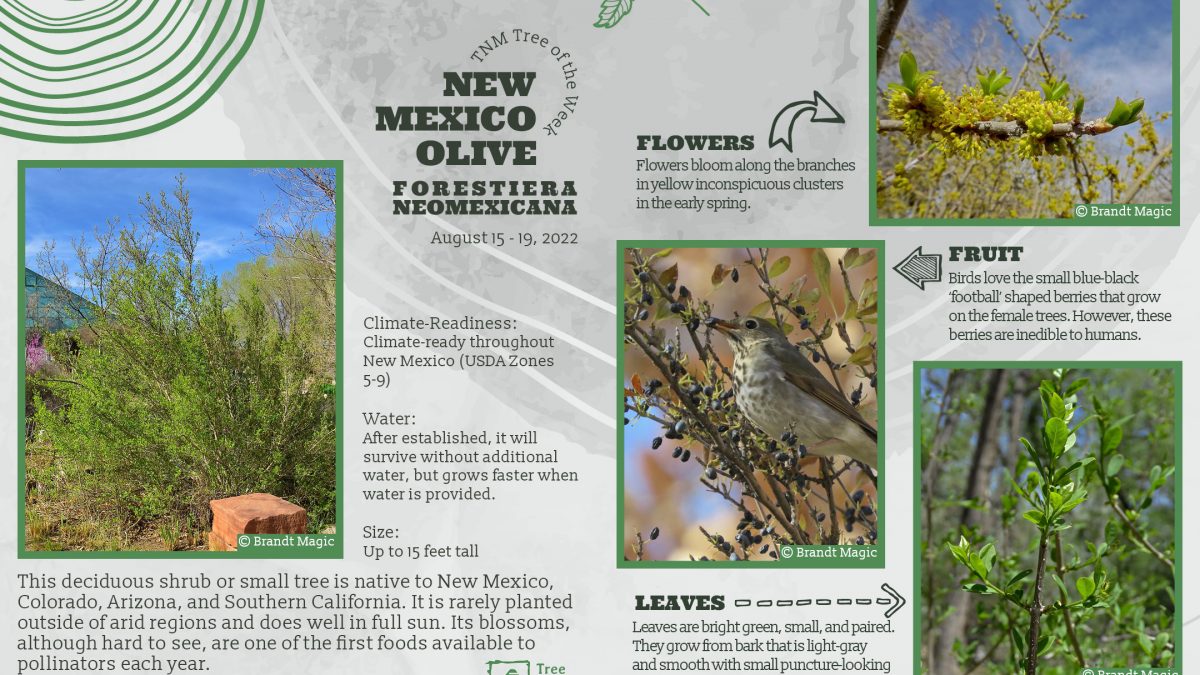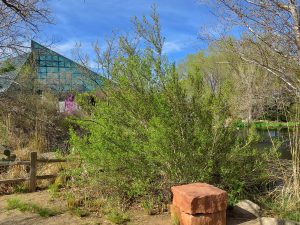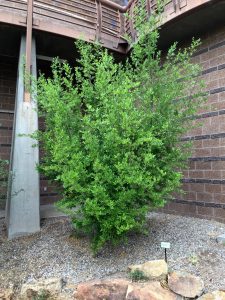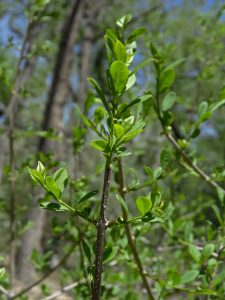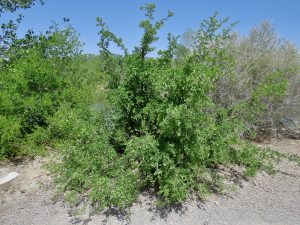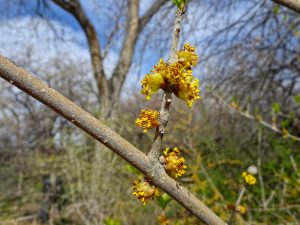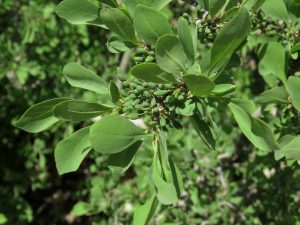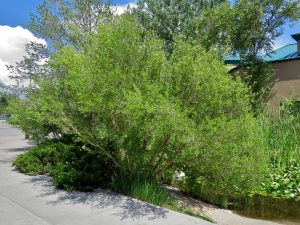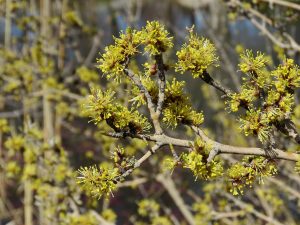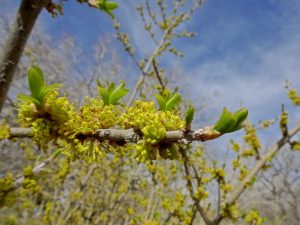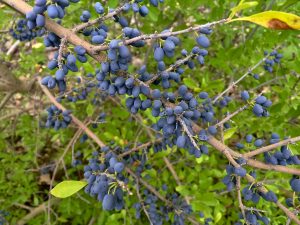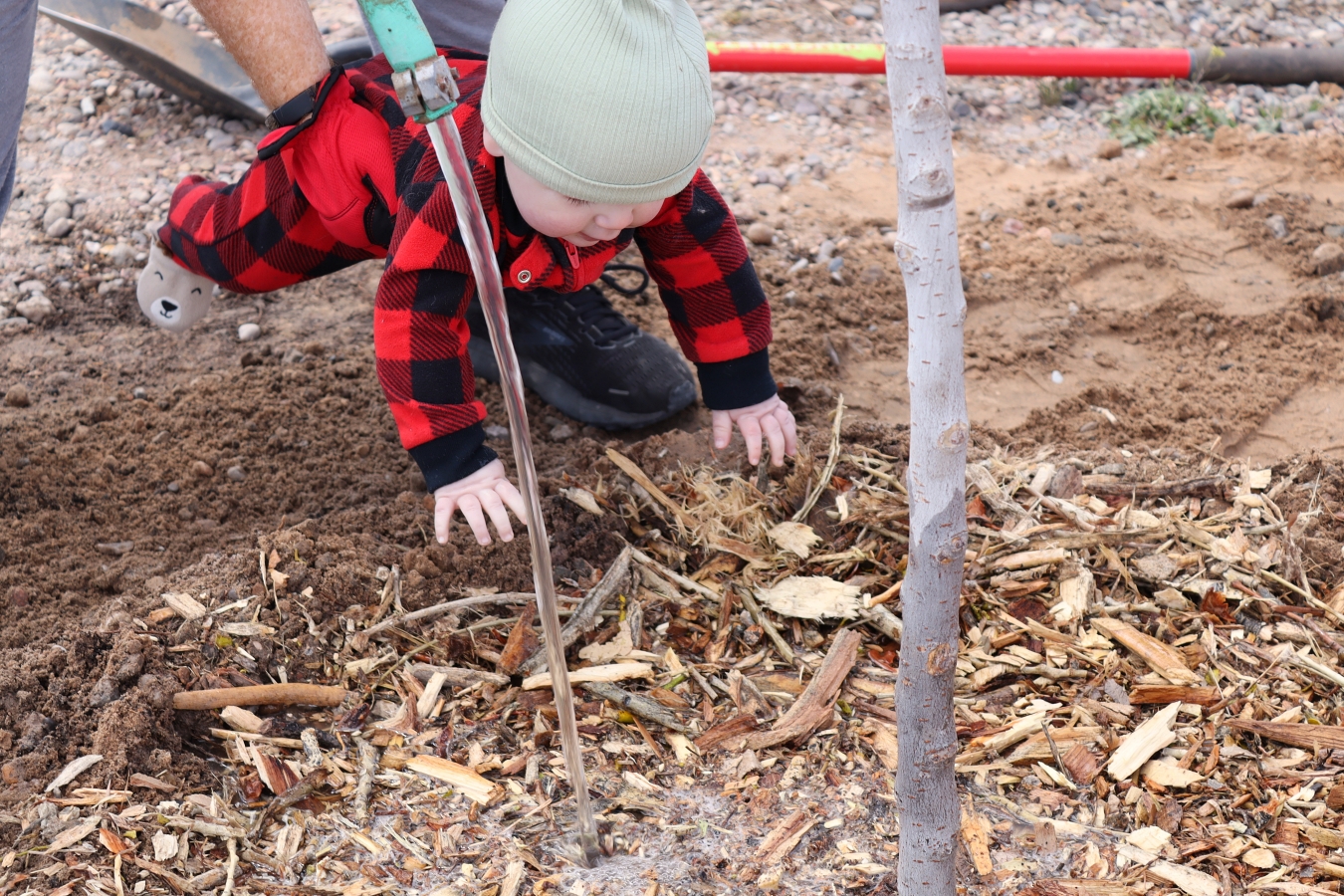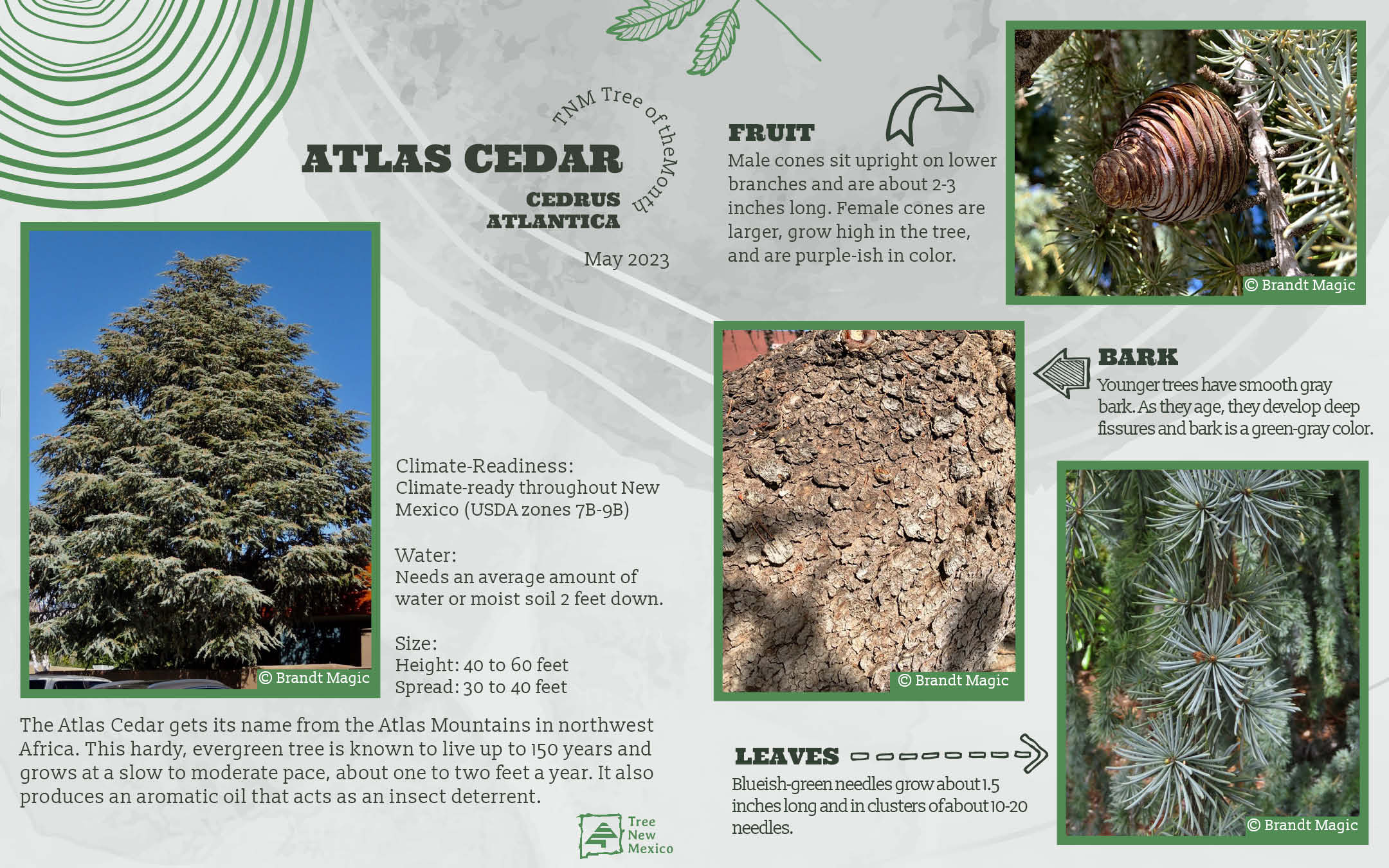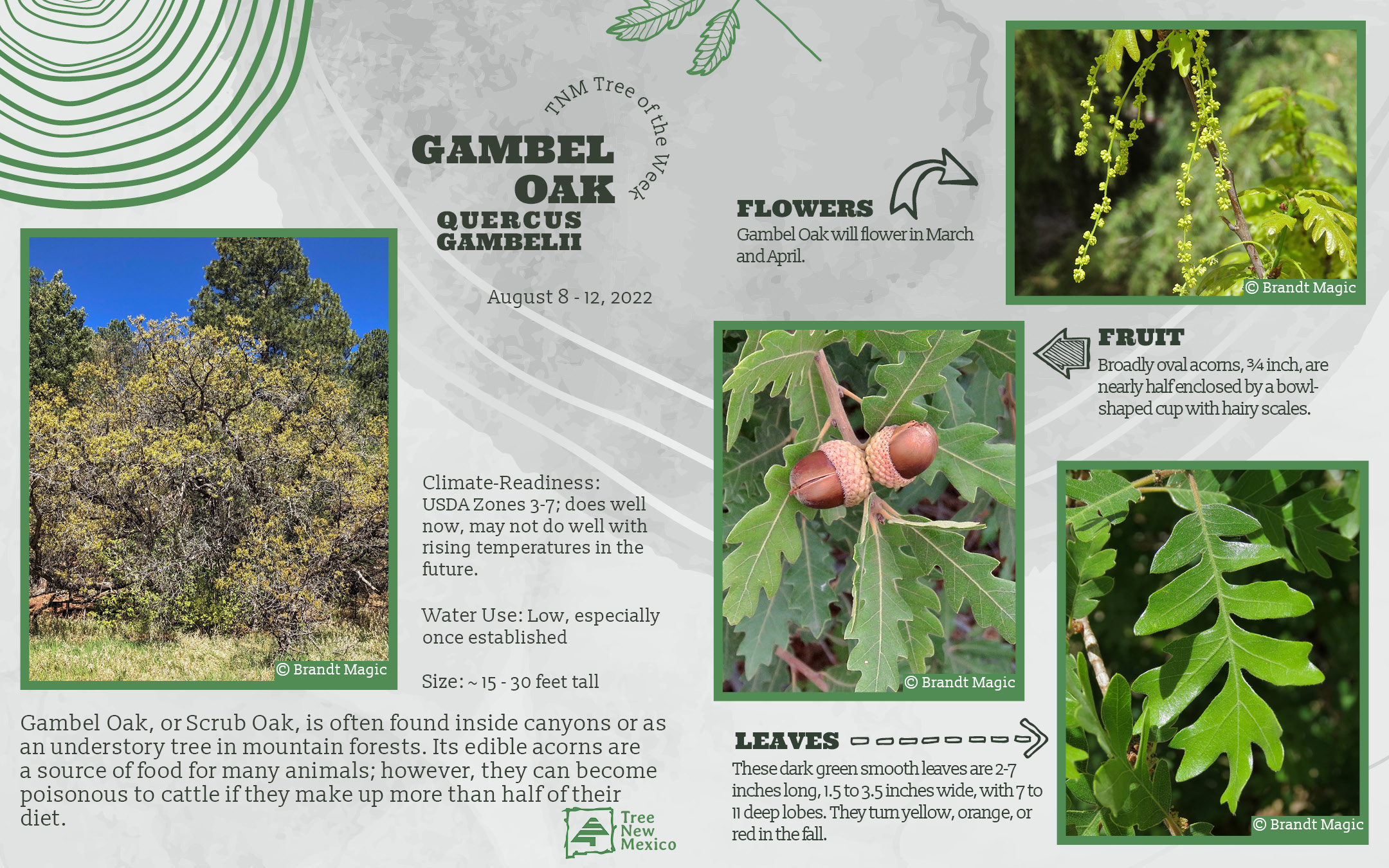
Gambel Oak
August 8, 2022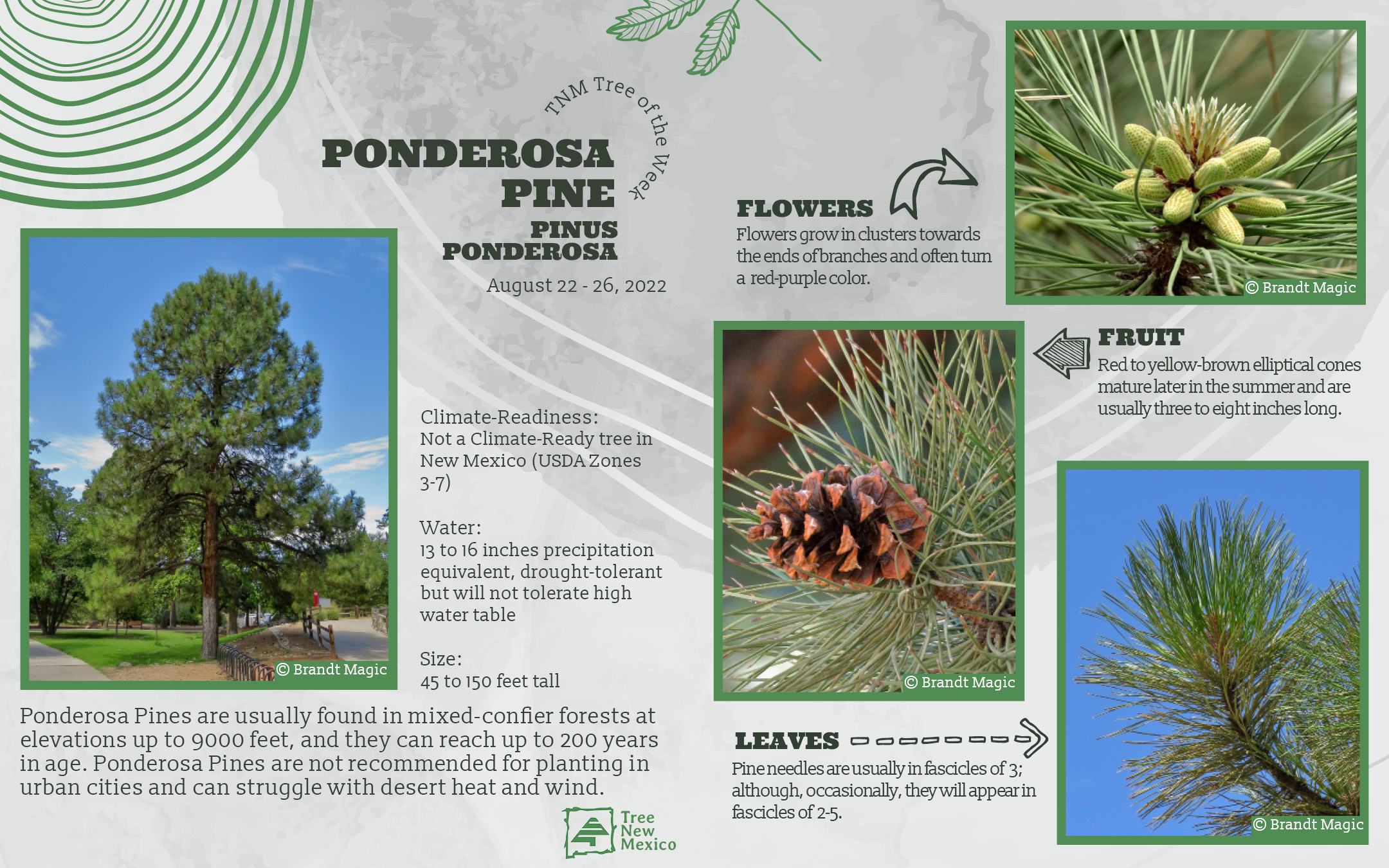
Ponderosa Pine
August 24, 2022Scientific name: Forestiera pubescens var. pubescens
Alternate names: New Mexican Privet, Strechberry
Description: A deciduous small, shrubby tree of the Oleaceae (olive and ash) family. Native throughout the southwest and abundant in the Rio Grande bosque, New Mexico olive is extremely well-adapted to arid regions. A row makes an excellent screening hedge and windbreak, or lower limbs can be removed for an attractive small tree with attractive white bark. While the New Mexico olive naturally grows in riparian areas like the bosque and ephemeral streams, once established it needs very little water.
Valuable for native pollinators and birds. Does well in full sun or partial shade. Gaining popularity due to its resilience, fast growth, and brilliant yellow fall color.
Climate-readiness: Enthusiastically recommended. Thrives throughout New Mexico in USDA Zones 5-9
Height: Up to 15 feet and just as broad.
Leaves: Leaves are bright green, small, and paired. They grow from bark that is light-gray and smooth with small puncture-looking marks.
Fruit: Grow on female trees, are egg-shaped, blue-black or “football” shaped and about 1/4 inch long and appreciated by birds. Reportedly edible much like European olives, but too small to be practical for humans.
Flowers: Small yellow flowers bloom along the branches in early spring.
Native Habitat: Dry, rocky slopes and canyons in arid regions of the SW. Can endure extreme heat and wind with little moisture.
Water: Will survive on rainfall alone once established, but grows faster when water is provided.
Wildlife: Birds eat the fruits and its small blossoms are one of the first foods available to pollinators each year.
Management & Care: Pruning lower branches required to achieve a tree form. Alternatively, can be left in its natural form or pruned into a tidier shrub.
- NM Olive (Ⓒ Brandt Magic)
- NM Olive Flowers (Ⓒ Brandt Magic)
- NM Olive Leaves (Ⓒ Brandt Magic)
- NM Olive (Ⓒ Brandt Magic)
- NM Olive Flowers (Ⓒ Brandt Magic)
- NM Olive Leaves (Ⓒ Brandt Magic)
- NM Olive (Ⓒ Brandt Magic)
- NM Olive Flowers (Ⓒ Brandt Magic)
- NM Olive Berries (Ⓒ Brandt Magic)
- NM Olive Berries (Ⓒ Brandt Magic)
- NM Olive Flowers (Ⓒ Brandt Magic)
- NM Olive Berries (Ⓒ Brandt Magic)

